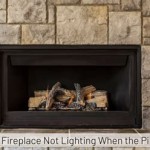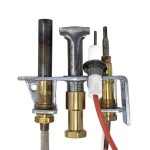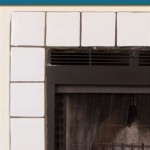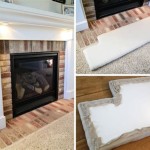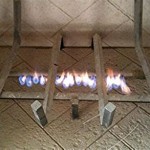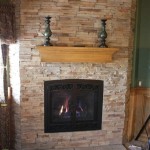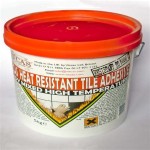Wood Fireplace Surround Plans: Designs and Considerations
A fireplace surround is a functional and aesthetically pleasing element that enhances the visual appeal and practicality of a fireplace. Whether you are building a new fireplace or updating an existing one, carefully planning the surround is crucial. This article will explore the designs and considerations involved in creating a beautiful and functional wood fireplace surround.
Design Considerations for Wood Fireplace Surrounds
Before embarking on a wood fireplace surround project, it is essential to consider several factors that will influence the final design. These include:
- Fireplace Style: The style of the fireplace itself should guide the design of the surround. A traditional fireplace may benefit from a more ornate surround, while a modern fireplace might be well-suited to a minimalist, clean-lined design.
- Room Style: The overall style of the room should also be taken into account. A farmhouse-style room might call for a rustic wood surround, while a contemporary room could benefit from a sleek, geometric surround.
- Materials: The choice of materials for the surround is a significant aspect to consider. Wood is a popular choice due to its warmth and natural beauty, but other materials such as stone, brick, or tile can also be employed.
- Budget: The budget for the project will dictate the materials and complexity of the surround.
- Functionality: Consider the functionality of the surround. Do you need additional storage space or a mantel for displaying items?
Popular Wood Fireplace Surround Styles
There are various styles of wood fireplace surrounds to choose from. Some popular options include:
- Traditional: Traditional fireplace surrounds often feature intricate details, elaborate molding, and a mantel. They are typically made from hardwoods such as oak, cherry, or mahogany.
- Modern: Modern fireplace surrounds are characterized by clean lines, minimal ornamentation, and a focus on simplicity. They are often made from reclaimed wood, plywood, or concrete.
- Rustic: Rustic fireplace surrounds embrace natural textures and finishes. They are often made from rough-hewn beams, reclaimed barn wood, or weathered stone. They evoke a sense of warmth and coziness.
- Farmhouse: Farmhouse-style fireplace surrounds are characterized by their simplicity and use of natural materials. They often feature distressed wood, shiplap, or whitewashed finishes.
Building a Wood Fireplace Surround
Building a wood fireplace surround can be a challenging but rewarding project. Here are some key steps involved:
- Plan and Design: Start by planning the design and carefully measuring the fireplace opening. Create a detailed plan including the dimensions, materials, and construction methods.
- Prepare the Firebox: Ensure the firebox is in good condition and properly sealed before installing the surround. Address any issues, such as cracks or loose mortar.
- Install the Framing: Construct a sturdy frame around the fireplace opening using wood studs. This frame will provide support for the surround.
- Install the Mantel: The mantel is typically installed on top of the framing. Choose a mantel style that complements the overall design.
- Add the Sheathing: Sheathing boards are attached to the frame to provide a smooth surface for the final finish.
- Install the Finishing Material: The chosen wood or other materials are installed to create the desired aesthetic.
- Finish and Seal: Apply stains, paints, or finishes to the surround to enhance its appearance and protect the wood.
It is crucial to obtain all necessary permits and consult with a qualified professional, especially when working with a fireplace.
Considerations for Using Wood
When using wood for a fireplace surround, there are important considerations to keep in mind:
- Fire Rating: Choose wood species with a good fire rating. Hardwoods generally offer better fire resistance than softwoods.
- Heat Resistance: Ensure the wood is treated with heat-resistant finishes or coatings to prevent damage from the heat of the fireplace.
- Moisture Resistance: Select wood that is naturally resistant to moisture and humidity. Consider applying a sealant to protect the wood from warping or damage.
- Maintenance: Be prepared to maintain the wood fireplace surround. Regular cleaning and refinishing may be required to keep the wood looking its best.
With careful planning, attention to detail, and the use of high-quality materials, a wood fireplace surround can transform a fireplace into a focal point that adds warmth, beauty, and elegance to any room.

Diy Fireplace Mantel Designatedspacedesign Com

Woodsmith Fireplace Surround Plans Woods
:max_bytes(150000):strip_icc()/sandandsisal-bdc76ad938a44d28ae9e23ef6c9fa331.jpg?strip=all)
17 Diy Fireplace Mantel Plans

How To Make An Easy Diy Fireplace Mantel Sprucing Up Mamahood

How To Build A Diy Fireplace Mantel Fixthisbuildthat

Diy Fireplace Mantel And Surround Jenna Kate At Home

Diy Rustic Fireplace Mantel The Cure For A Boring

Easy Fireplace Mantel Diy

Diy Fireplace With Electric Insert Angela Marie Made

How To Build A Diy Fireplace Mantel Fixthisbuildthat

